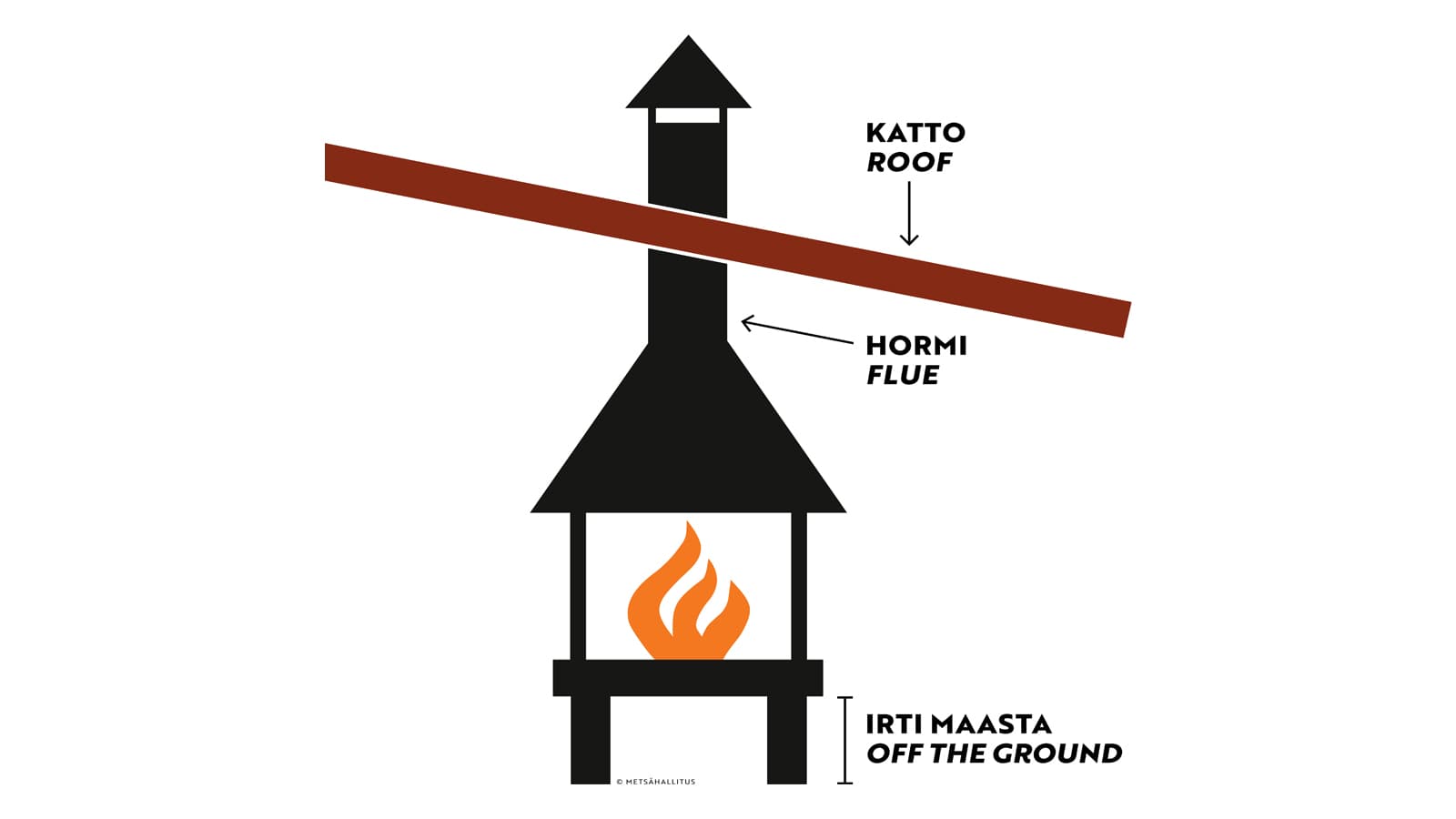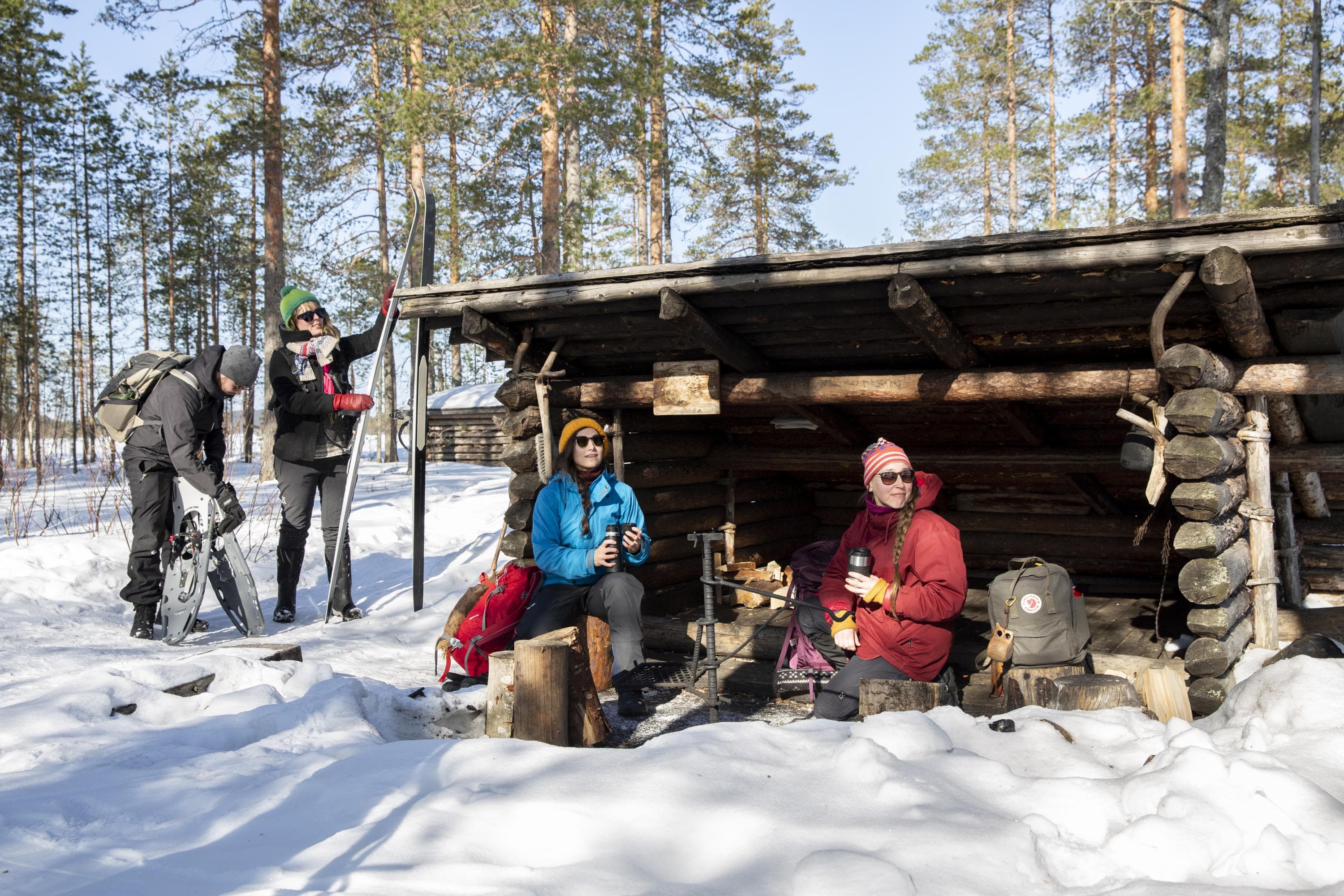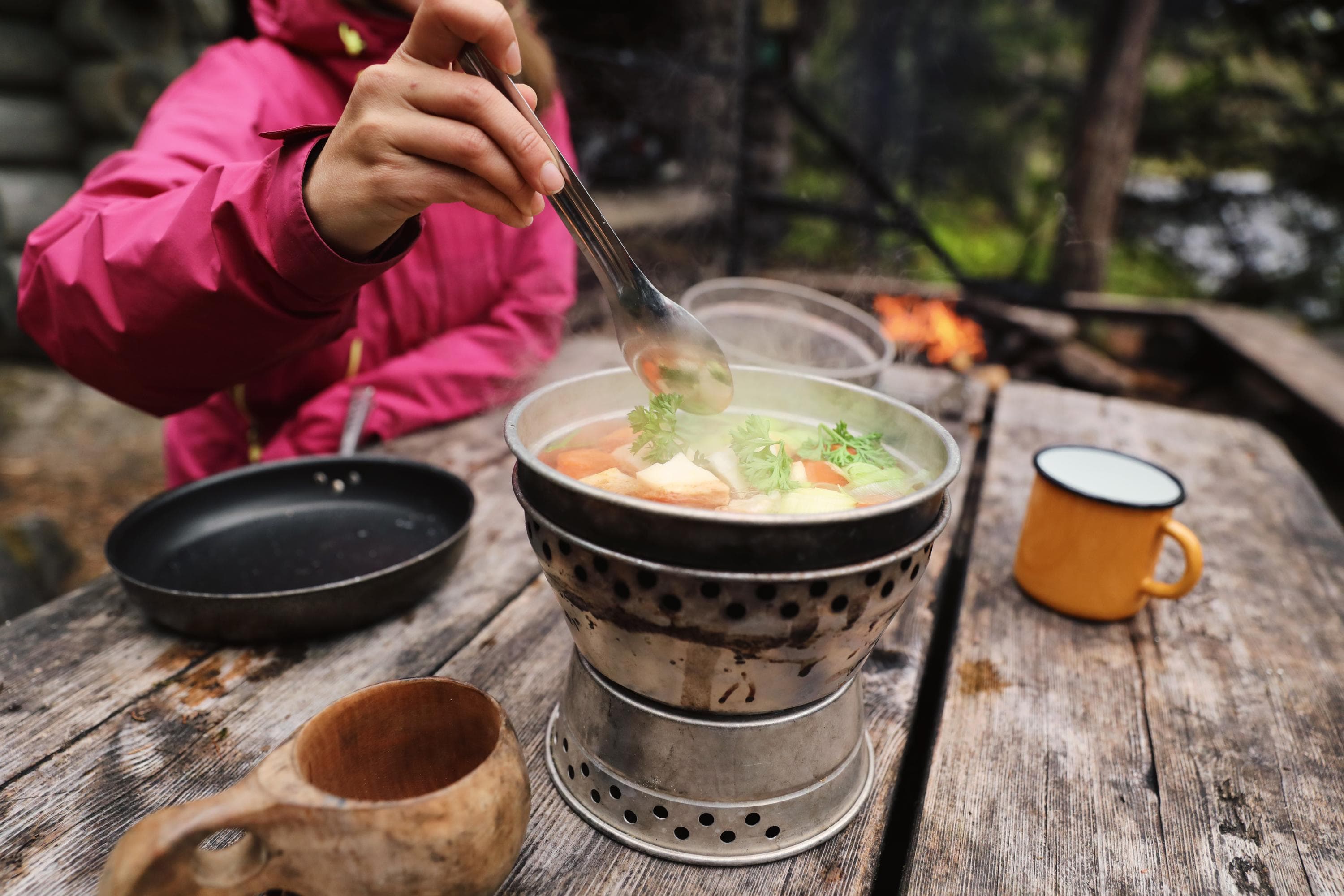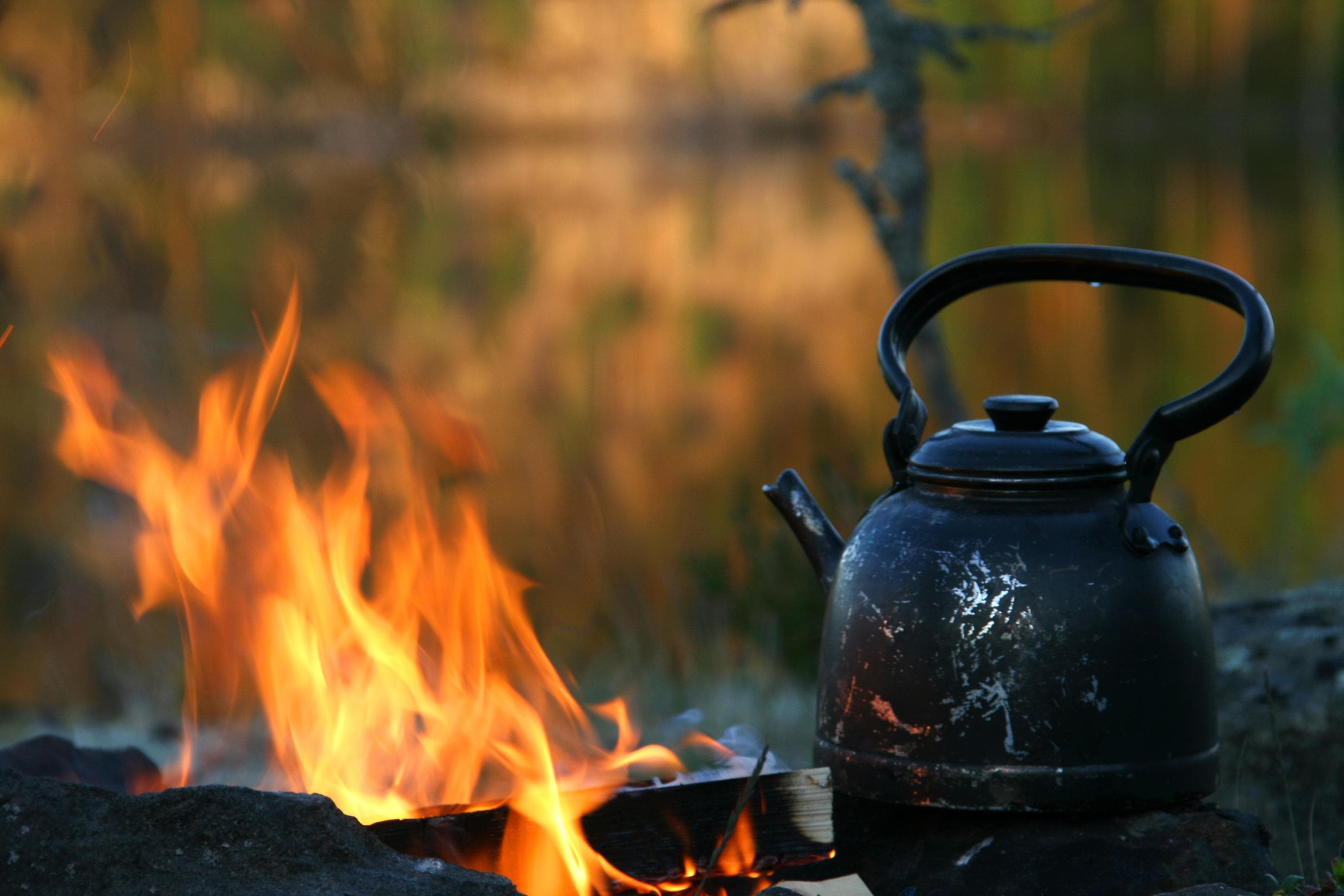A small guide to campfire safety while out in nature
Being able to make a campfire is a valuable skill for all hikers and outdoor enthusiasts. There’s nothing quite like gathering around a warm fire, cooking your own meal, and enjoying the atmosphere. However, making an open fire is not everyone’s right – it always requires a permit, and is often even prohibited. Luckily, there are plenty of safe and approved options to choose from.
In Finland, you can easily gather around a campfire, both in the wilderness and even in slightly more urban locales. This article explains where and how you can make a fire safely and legally.
Serviced campfire sites – the easiest and safest option
There are thousands of official campfire sites in Finland, which are maintained by Metsähallitus, municipalities, cities, and various associations. These sites are readily available on many maps, and they represent the easiest way to enjoy a warm fire.
Remember to always check the Finnish Meteorological Institute's website for any wildfire warnings. When a warning is in effect, making a campfire is prohibited in almost all locations.
Most campfire sites come with their own firewood, courtesy of the party maintaining that particular spot. However, you may be required to saw or chop your firewood down to size. Remember to also bring your own matches and kindling, as well as a coffee pot and sausage sticks, if you feel like cooking outdoors.
You may need to bring your own firewood to some locations – and remember that you may not collect any trees or twigs from nature, unless otherwise permitted in the area.

Making an open campfire – an exception that requires a permit
Sometimes you may also be permitted to make campfires at other locations than campfire sites. This always requires a separate permit:
1. On private land
- Ask the landowner for permission.
2. State-owned lands in Lapland, North Ostrobothnia, Kainuu, and North Karelia
- Metsähallitus has granted a general permit for making campfires.
- An exception to this are many nature conservation areas and wilderness reserves. If a care and use plan or regulation has been drawn up for an area, follow its policies. The need for a permit for making a campfire must always be checked separately on the location’s website or from the conservation order.
- If making a campfire is permitted, you may only use the twigs, branches, and small stumps you find on the ground – do not damage any living or dead trees. Campfires should be avoided in areas with few trees, such as fells.
- Use a previous or official campfire site if it is less than 500 metres away.
3. In most of Finland
- making a campfire is only permitted on state-owned land at designated campfire sites, using firewood brought to the site for this purpose.
4. Hobo stoves are open fires
- The use of a hobo stove requires a permit and is prohibited during wildfire warnings. You can read more about using a hobo stove at the end of this article.
When a wildfire warning is in effect
During a wildfire warning, making a campfire is permitted, with special caution, only at the following locations:
- campfire sites that are raised above the ground and equipped with a roof and flue
- fireplaces in huts
In certain situations, all campfires can be prohibited when necessary.

According to the Rescue Act, open fires include:
- campfires
- disposable grills
- portable grills
- hobo stoves
- other fireplaces placed directly on the ground
The ABCs of safety – scorch your food, not the earth
Fire is a good servant, but a bad master. When you light a fire, you are always responsible for ensuring the safety and extinguishment of your fire.
1. Only make fires where it is permitted
The campfire sites marked on a map are a safe choice. Making an open campfire always requires a permit and involves greater responsibility..
2. Take note of any warnings and your surroundings
- Making an open fire is prohibited when a wildfire warning is in effect, and this also includes official campfire sites. Remember to check for any warnings at ilmatieteenlaitos.fi.
- In the event of a forest fire, the person who lit the fire may be subject to sanctions and be liable for damages under the Criminal Code or Rescue Act. Wilderness supervision officers and the police can issue fines for lighting open fires during a wildfire warning.
3. Never leave a fire unattended
- Before resuming your journey, and if no one else is left at the campfire site, make sure that your campfire is completely extinguished.
- A badly extinguished fire can continue to smoulder for a long time, especially out in the open, and later ignite a wildfire.
- Let your campfire slowly go out until only embers remain. Once the embers no longer glow red, you can place the fireplace’s lid on or carefully pour water, snow, or sand into the campfire.
- Even at a busy campfire site, you must never leave your fire unattended to wait for the next hiker.

Portable stoves – heat without an open flame
Do you always need to make an open fire? Not necessarily. You can cook using a portable stove, and wearing warm garments when you rest reduces the need for an open fire. Portable stoves, such as alcohol- and gas-powered stoves, do not involve the use of open fire, and can also be used during a wildfire warning.
- Portable stoves can be used anywhere outdoor activities are permitted.
- Place the stove on a stable, non-combustible surface
- Be especially careful if the terrain is dry and the weather is windy
A hobo stove is an open fire, and using it requires permission from the landowner. Metsähallitus has outlined that the use of hobo stoves is permitted on state-owned land where people are allowed to roam. The use of a hobo stove is not permitted during wildfire warnings, due to the risk of sparks.

